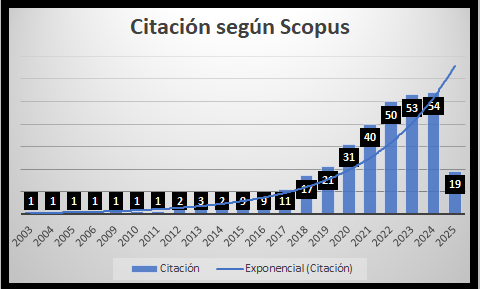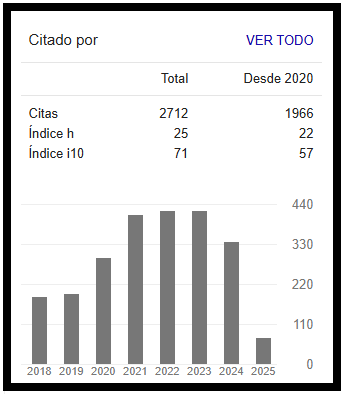Like or follow: Analysis of the communication of Corporate Social Responsibility practices through Social Media
DOI:
https://doi.org/10.24265/cian.2013.n3.04Keywords:
Corporate Social Responsibility, Social Media, Organizational Communication, Public Relations, StakeholdersAbstract
Corporate Social Responsibility (CSR) can be defined as a responsible way of doing business and the impact these operations have in the economy, the society and the environment. Nowadays, companies use different avenues to communicate CSR initiatives. Social Media platforms are one of the important resources to communicate CSR. This paper performs an empirical analysis of frequency, content, and feedback of CSR messages presented on social platforms (Facebook and Twitter) of 50 companies from the Fortune Magazine. Results showed that in spite of the great resources available for CSR online communication, companies are still in its infancy in promoting a two-way communication process. In order to resolve this problem, this paper proposes a theoretical framework for CSR communication through social media.
Metrics
Downloads
References
Bakan, J. (2004). The Corporation. The pathological pursuit of profit and power. Nueva York: Free Press.
Barnes, N. y Mattson, E. (2010). “The Fortune 500 and Social Media: A Longitudinal Study of Blogging and Twitter usage by America’s Largest Companies”. Extraída el 15/V/2011 desde http://es.scribd.com/doc/-42208757/The-Fortune-500-and-Social-Media-A-Longitudinal-Study-of-Blogging-Twitter-and-Facebook-Usage-by-America-s-Largest-Companies-By-Nora-Garim-Barnes
Basil, D. y Erlandson, J. (2008). “Corporate Social Responsibility website representations: A longitudinal study of internal and external self-presentations”. Journal of Marketing Communications, vol. 14, núm. 2, pp. 125-137.
Birth, G. y otros (2008). “Communicating CSR: practices among Switzerland’s top 300 companies”. Corporate Communications: An International Journal, vol. 13, núm. 2, pp. 182-196.
Boyd, D. (2009). “Social media is here to stay... Now what?” Extraída el 25/IV/2011 desde http://www.danah.org/papers/talks/MSRTech-Fest2009.html
Burkhardt, P. (2009). “Social Software Trends in Business: Introduction”, pp. 3180-3195. En Tiako, P. (ed.). Software Applications: Concepts, Methodologies, Tools, and Application. Pennsylvania: Information Science Reference.
Capriotti, P. y Moreno, A. (2007). “Corporate citizenship and public relations: The importance and interactivity of social responsibility issues on corporate websites”. Public Relations Review, vol. 33, núm. 1, pp. 84-91.
Carroll, A. (1999). “Corporate Social Responsibility: Evolution of a Definitional Construct”. Business and Society, vol. 38, núm. 3, pp. 268-295.
Carroll, A. y Shabana, K. (2010). “The Business Case for Corporate Social Responsibility: A Review of Concepts, Research, and Practice”. International Journal of Management Reviews, vol. 12, núm. 1, pp. 85-105.
Chaudhri, V. y Wang, J. (2007). “Communicating Corporate Social Responsibility on the Internet. A Case Study of the Top 100 Information Technology Companies in India”. Management Communication Quarterly, vol. 21, núm. 2, pp. 232-247.
Christensen, L. y Cheney, G. (2000). “Self-absorption and self-seduction in the corporate identity game”, pp. 246-270. En Hatch, M.; Schultz, M. y Larsen, M. (eds.). The Expressive Organization. Oxford: Oxford University Press.
CNN Money (2010). “World’s Most Admired Companies”. Extraída el 6/VIII/2013 desde http://money.cnn.com/magazines/fortune/mostadmired/2010/full_list/
Crowther, D. (2002) . “The psychoanalysis of on-line reporting”, pp. 130-148. En Holmes, L.; Grieco, M. y Hosking, D. (eds.). Distributed technology, distributed leadership, distributed identity, distributed discourse: organizing in an information age. Aldershot: Ashgate.
Crowther, D. y Aras, G. (2008). Corporate Social Responsibility. Copenhagen: Ventus Publishing ApS. Extraída el 12/IX/2013 desde http://www.kantakji.com/fiqh/Files/Companies/z126.pdf
Dahlsrud, A. (2008). “How corporate social responsibility is defined: an analysis of 37 definitions”. Corporate Social Responsibility and Environmental Management, vol. 15, núm. 1, pp. 1-13.
Dawkins, J. (2005). “Corporate Responsibility: the Communication Challenge”. Journal of Communication Management, vol. 9, núm. 2, pp. 108-119.
De la Cuesta González, M. y Valor Martínez, C. (2004). “Fostering Corporate Social Responsibility through Public Initiative: From the EU to the Spanish Case”. Journal of Business Ethics, vol. 55, núm. 3, pp. 275-293.
De la Cuesta González, M.; Valor Martínez, C. y Kreisler Merino, I. (2003). “Promoción institucional de la Responsabilidad Social Corporativa, Iniciativas internacionales y nacionales”. Boletín Económico de ICE, núm. 2779, pp. 9-20.
Du, S.; Bhattacharya, C. y Sen, S. (2010). “Maximizing Business Returns to Corporate Social Responsibility (CSR): The Role of CSR Communication”. International Journal of Management Reviews, vol. 12, núm. 1, pp. 8-19.
Esrock, S. y Leichty, G. (1998). “Social Responsibility and Corporate Web Pages: Self-Presentation or Agenda Setting?” Public Relations Review, vol. 24, núm. 3, pp. 305-319.
Facebook Newsroom (2013). “Key Facts”. Extraída el 6/VIII/2013 desde http://newsroom.fb.com/content/default.aspx?NewsAreaId=22
Fieseler, C.; Fleck, M. y Meckel, M. (2010). “Corporate Social Responsibility in the blogosphere”. Journal of Business Ethics, vol. 91, núm. 4, pp. 599-614.
Garriga, E. y Melé, D. (2004). “Corporate Social Responsibility Theories: Mapping the Territory”. Journal of Business Ethics, vol. 53, núms. 1-2, pp. 51-71.
Gómez, L. y Chalmeta, R. (2011). “Corporate Responsibility in US corporate websites: A pilot study”. Public Relations Review, vol. 3, núm. 1, pp. 93-95.
Grunig, J. y Hunt, T. (1984). Managing Public Relations. Orlando: Harcourt Brace Jovanich.
Hearn, G.; Foth, M. y Gray, H. (2009). “Applications and implementations of new media in corporate communications. An action research approach”. Corporate Communications: An International Journal, vol. 14, núm. 1, pp. 49-61.
Hughes, A. y Palen, L. (2009). “Twitter Adoption and Use in Mass Convergence and Emergency Events”. International Journal of Emergency Management, vol. 6, núms. 3-4, pp. 248-260.
Ihlen, O.; Barlett, J. y May, S. (2011). “Corporate Social Responsibility and Communication”, pp. 3-22. En Ihlen, O.; Barlett, J. y May S. (eds.). The Handbook of Communication and Corporate Social Responsibility. Oxford: Wiley-Blackwell.
Isenmann, R. (2006). “CSR Online: Internet Based Communication”, pp. 246-253. En Jonker, J. y De White, M. (eds.). Management Models for Corporate Social Responsibility. Berlín: Springer.
Kim, S.; Park. J. y Wertz, E. (2010). “Expectations gaps between stakeholders and web-based corporate public relations efforts: Focusing on Fortune 500 corporate websites”. Public Relations Review, vol. 36, núm. 3, pp. 215-221.
Lovejoy, K. y Saxton, G. (2012). “Information, Community, and Action: How Nonprofit Organizations Use Social Media”. Journal of Computer-Mediated Communication, vol. 17, núm. 3, pp. 337-353.
Lundquist (2010, octubre). “CSR Online Awards Survey 2010: Time to get real-time and personal”. Extraída el 20/IV/2011 desde http://www.lundquist.it/research/
Mangold, G. y Faulds, D. (2009). “Social media: the new hybrid element of the promotion mix”. Business Horizons, núm. 52, pp. 357-365.
Morsing, M. y Schultz, M. (2006). “Corporate Social Responsibility Communication: Stakeholder Information, Response, and Involvement Strategies”. Journal of Business Ethics, vol. 15, núm. 4, pp. 323-388.
Morsing, M.; Schultz, M. y Nielsen, K. (2008). “The ‘Catch 22’ of communicating CSR: Findings from a Danish study”. Journal of Marketing Communications, vol. 14, núm. 2, pp. 97-111.
Orjuela Córdoba, S. (2011). “La Comunicación en la gestión de la Responsabilidad Social Empresarial”. Correspondencias & Análisis, núm. 1, pp. 137-156.
Rybalko, S. y Seltzer, T. (2010). “Dialogic communication in 140 characters or less: How Fortune 500 companies engage stakeholders using Twitter”. Public Relations Review, vol. 36, núm. 4, pp. 336-341.
Schneider, A.; Stieglitz, S. y Lattemann, C. (2007, noviembre 8). “Social Software as an Instrument of CSR”. Ponencia presentada en la Conferencia de ICT, Transparency and Social Responsibility. Lisboa.
Smith, C. (2011, marzo 14). “Twitter User Statistics Show Stunning Growth, The Huffington Post”. Extraída 28/IV/2011 desde http://www.huffingtonpost.com/2011/03/14/twitteruser-statistics_n_835581.html
Tang, L. y Li, H. (2009). “Corporate social responsibility communication of Chinese and global corporations in China”. Public Relations Review, núm. 35, pp. 199-212.
Thackeray, R. y otros (2008). “Enhancing promotional strategies within social marketing programs: use of Web 2.0 social media”. Health Promotion Practice, vol. 9, núm. 4, pp. 338-343.
Van Marrewijk, M. (2003). “Concepts and Definitions of CSR and Corporate Sustainability: Between Agency and Communion”. Journal of Business Ethics, vol. 44, núms. 2-3, pp. 95-105.
Wanderley, L. y otros (2008). “CSR Information Disclosure on the Web: A Context-Based Approach Analyzing the Influence of Country of Origin and Industry Sector”. Journal of Business Ethics, vol. 82, núm. 2, pp. 369-378.
Waters, R. y otros (2009). “Engaging stakeholders through social networking: How nonprofits organizations are using Facebook”. Public Relations Review, vol. 35, núm. 2, pp. 102-106.
Downloads
Published
Issue
Section
Categories
License
Copyright (c) 2013 Lina Gómez Vásquez

This work is licensed under a Creative Commons Attribution 4.0 International License.
In case the manuscript is approved, the authors retain the copyright and assign to the journal the right to publish, edit, reproduce, distribute, display and communicate in the country of origin and abroad by means of print and electronic media in different databases.
In order for this procedure to be recorded, the author must fill out the following formats:
Format 1 - Author data Format.
Format 2 - Affidavit on originality and authorization for the publication of articles Format.
Format 3 - Open Science Compliance.








2.png)


















